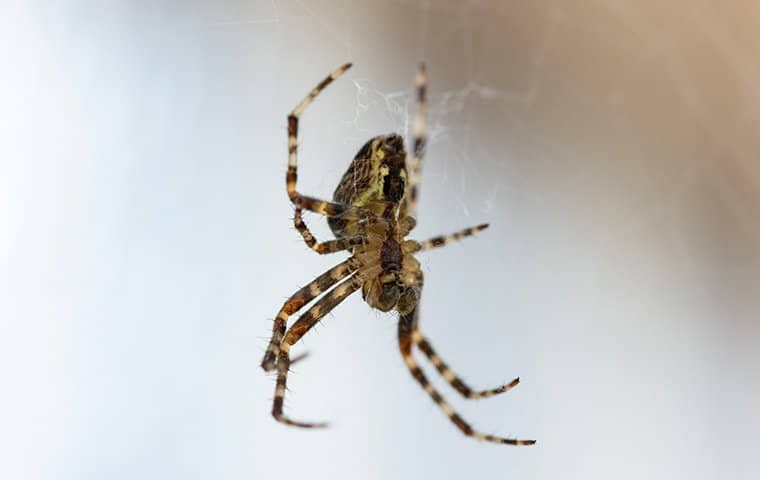
West Palm Beach's Ultimate Guide To Spider Control
March 31, 2024
Concerned about spiders in West Palm Beach? Discover how Empire Pest Defense can make your home spider-free!... Read More
Request Your Inspection Today! (561) 798-7216
Get StartedThere are over 20,000 bee species across the world. That is, that’s how many experts have identified. There are actually estimated to be double that many species. We just don’t know of all of them yet. Bees are known to live on every continent except for Antarctica, and there are 4,000 bee species alone that are native to North America.

Most usually consider bee season to be between mid-March and early July. To assist you in your bee detection efforts, here are some major characteristics to help you identify bees around your property:
Their body has three segments (One thorax with six legs, one head with two antennae, and one abdomen)
Covered in branched/feathered hairs that pollen clings to
Adults bees range in size from 0.08 - 1.6 inches
Female bees have stingers, and bees come in a variety of species and colors
Common colors are black, brown, or banded with yellow, white, or orange stripes
Unlike what many of us imagine, most bees are solitary, meaning they don’t form hives. While it’s normal to picture bees buzzing around together in a communal hive, only a few species actually do this. Most bee species build their nests in holes in the ground or hollows in trees, dead wood, and decaying walls.
Only honeybees and bumblebees are social, living in colonies that produce and store honey. While bees are primarily associated with their sting, the truth is that bees only sting upon being threatened. They’re much more beneficial than they are harmful.
Bees inhabit all different kinds of areas, ranging from grasslands and marshes to quarries and wetlands. Wherever we may find them, one thing remains: bees play a huge role in the operation of our environment and the overall function of our ecosystem.
Bees feed on protein-rich pollen and sugary nectar from flowering plants. They prefer quintessential garden flowers such as marigolds, wildflowers, primroses, gravitating mostly towards blue, purple, and yellow flowers. They feed on nectar, gather pollen, and transport pollen from other plants as they go from flower to flower. This fertilizes the plants and allows them to reproduce.
The process of pollination generates fruits and seeds that feed other wildlife. In fact, bees pollinate 80% of all flowering plants (including 75% of U.S. fruits, nuts, and veggies), so clearly, they play a very important role in the overall function of the ecosystem. While many of us wish to reduce the presence of bees out of fear of getting stung, the truth is that many bees species are in danger, and there have been serious conservation efforts to reduce the loss of these beneficial bugs.
Despite their ecological benefits, it’s normal not to want bees nesting around your property. They can squeeze into openings as small as a quarter of an inch and expose your entire property to infestation. Here are some helpful ways to deter bees from building their nests around your home or business:
Seal potential entry points with caulk or using metal screens.
Close gaps around the foundation and siding of the structure.
Apply treatment around your home to treat scout bees swarming around.
Eliminate outdoor clutter to deter bees from nesting around your yard.
Don’t leave appliances, equipment, and junk strewn about the yard.
Be sure to remove all nests and honeycomb present on the property.
Block off access points such as cracks, crevices, or chips in the structure.
Get rid of piles of leaves or brush that are lying around your yard.
Avoid planting large flowers or cultivating a garden too close to your home.
Place peppermint plants around your property as bees dislike this scent.
Don’t leave out any prepared food as exposed food sources attract bees.
While it’s always great to take preventative measures to deter bees from nesting on your property, sometimes these efforts aren’t effective enough. If you detect any bee activity around your property, don’t try to deal with it on your own. It’s much too dangerous to try a remove a nest by yourself.
The best thing to do is contact your local pest professionals. That’s where the team at Empire Pest Defense comes in. We offer safe nest removal and bee prevention services that give you year-round protection from infestation. Call us today to learn more about our residential pest control or commercial pest management services.
Complete the form below to schedule your no obligation inspection.

March 31, 2024
Concerned about spiders in West Palm Beach? Discover how Empire Pest Defense can make your home spider-free!... Read More

March 20, 2024
Is your West Palm Beach garden suffering from white flies? See how the pros at Empire Pest Defense can help restore its health.... Read More